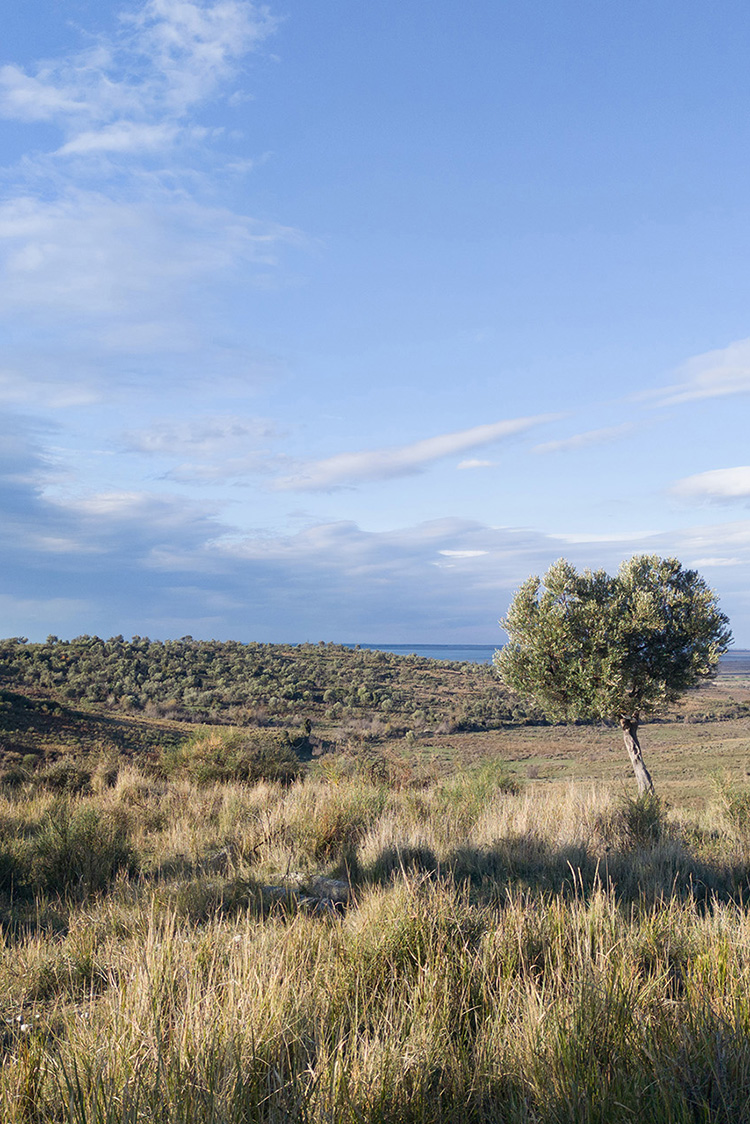


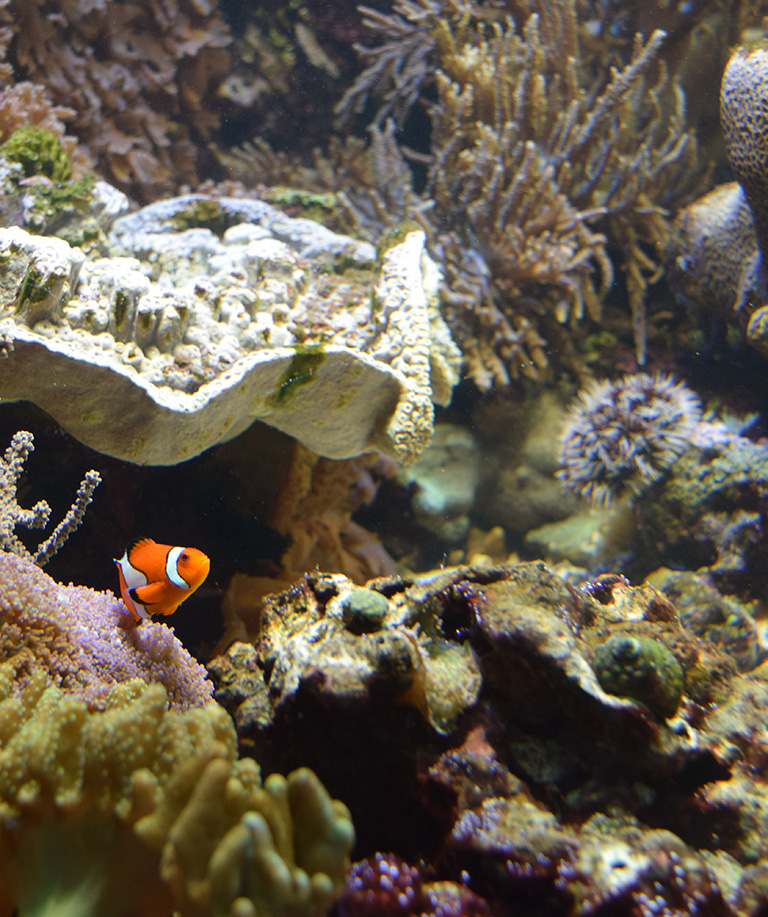
Environmental Projects
Fundación Banco Santander has been collaborating since 2004 with the main conservation organisations with a base in Spain to restore degraded natural spaces and preserve the biological diversity of the Iberian Peninsula.
In 2021, the Foundation extended its environmental efforts by creating the annual Santander for the Seas programme, which finances three initiatives, with a maximum duration of two years, aimed at the conservation of sea and ocean habitats and species. The winning projects of the second edition were presented by the Vellmarí Association, the Coordinadora para o Estudo dos Mamíferos Mariños-CEMMA and Fundación Naturaleza y Hombre.
Only the actions begun in 2022 are described below, although a list of all the projects that were in progress last year is provided.
Ibiza, Balearic Islands
The Foundation and the Vellmarí Association started collaborating in 2022 to improve the state of conservation of the violescent sea-whip (Paramuricea clavata) populations in the nature reserves of Es Vedrà, Es Vedranell and the Poniente Isles in Ibiza.
The initiative comprises three lines of action: a survey of the area, mitigation of threats and public awareness campaigns. After determining the distribution of the species and the degree of destruction by human activity, the fishing gear abandoned on the sea floor will be removed and a campaign will be carried out to raise the awareness of the fishing sector and the local population about the need to protect this fragile ecosystem.
The results of the study will be presented to the institutions involved in managing these protected areas so that effective measures can be implemented to guarantee their preservation.
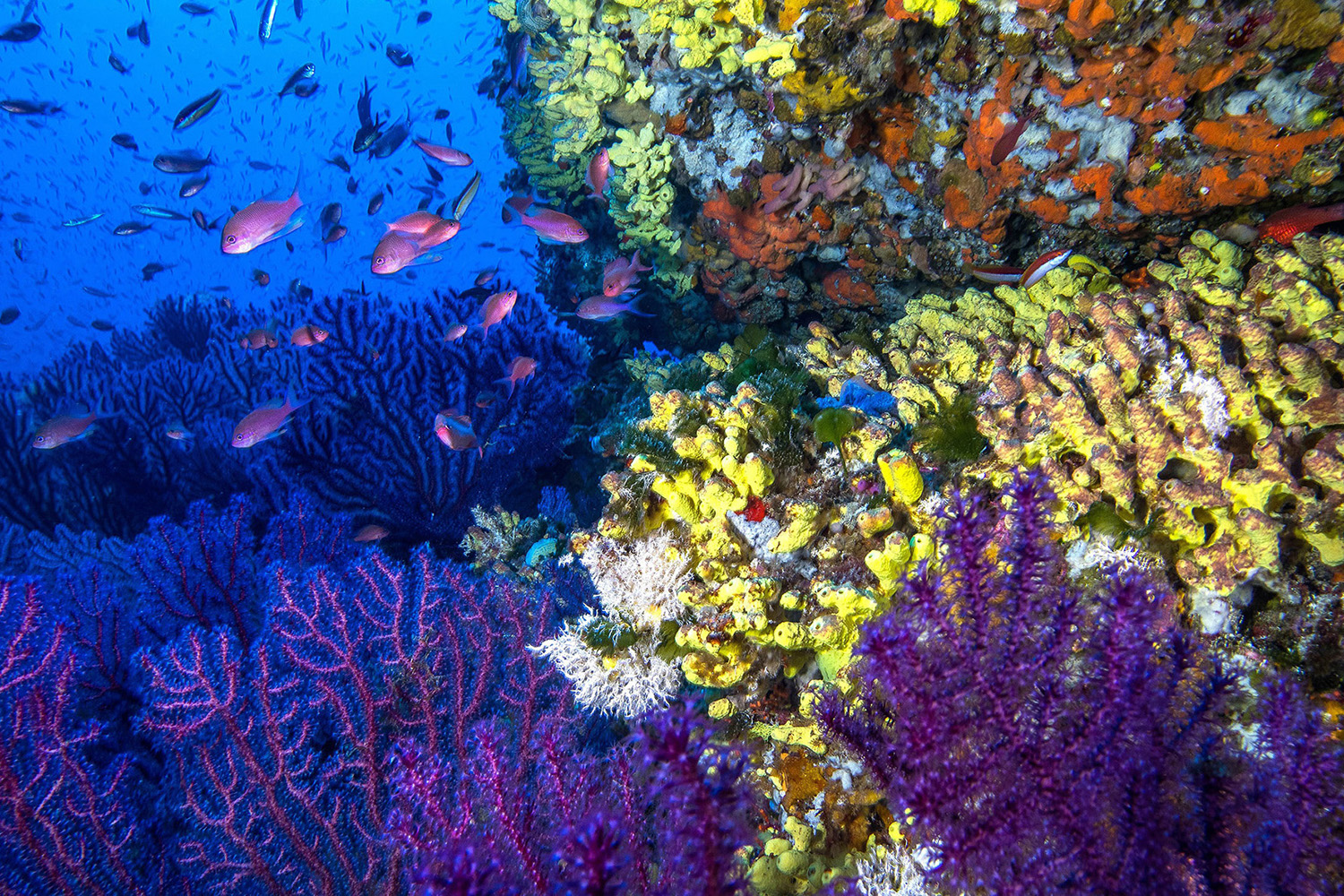
Santander, Cantabria
Carried out by Fundación Naturaleza y Hombre with support from Fundación Banco Santander, this initiative entails a series of actions to protect marine biodiversity, reduce pollution and restore the natural assets of Santander Bay.
The first step will be to remove the exotic invasive species and encourage the presence of native fauna such as the European eel (Anguilla anguilla), three-spined stickleback (Gasterosteus aculeatus) and the short- and long-snouted seahorses (Hippocampus hippocampus and Hippocampus guttulatus).
Different types of coastal habitats will also be restored and marine litter will be removed from the islands closest to the coast that have the largest biological communities.
Lastly, a communication plan, volunteering days and environmental education activities will be organised to raise public awareness about the importance of preserving this ecosystem threatened by demographic pressure.
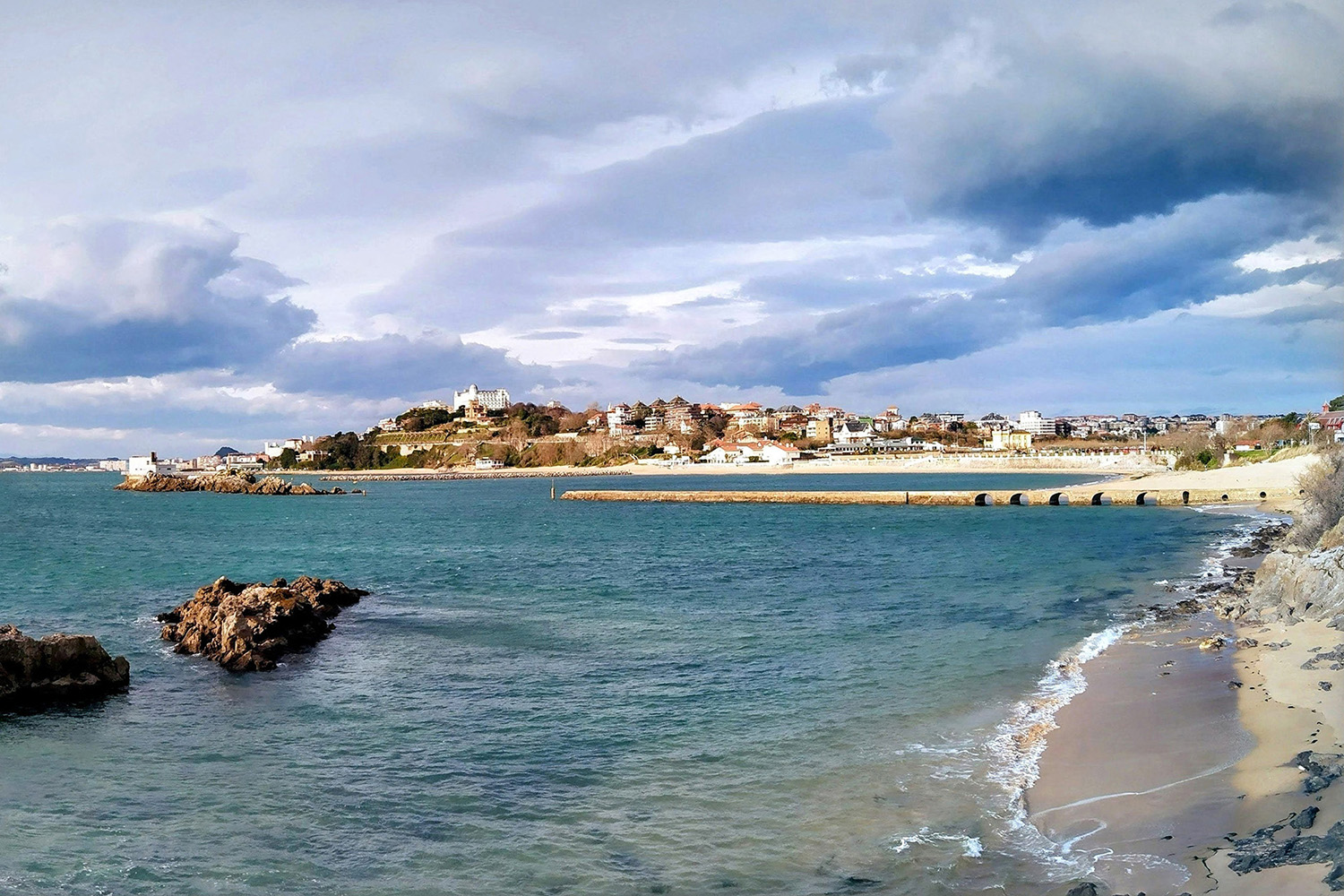
Galicia, Asturias, Cantabria, Basque Country and Andalucia
In 2022 Fundación Banco Santander signed a collaboration agreement with the Coordinadora para o Estudo dos Mamíferos Mariños (CEMMA) to encourage public participation in the conservation of Iberian orcas through a campaign to raise awareness about the species and one of its main threats: the interaction with boats.
The CEMMA team will create a catalogue of individuals to shed more light on their populations. The contents of the catalogue and information on the different species of cetaceans and their biology will be shared via a digital portal, social media and miscellaneous publicity materials (videos, posters, field notebooks, action protocols, etc.) for use in environmental education activities. The training workshops will be divided into three levels of detail according to the recipients: technical (maritime authorities and skippers), educational (diving schools and orca watching companies) and informative (schoolchildren and the general public).
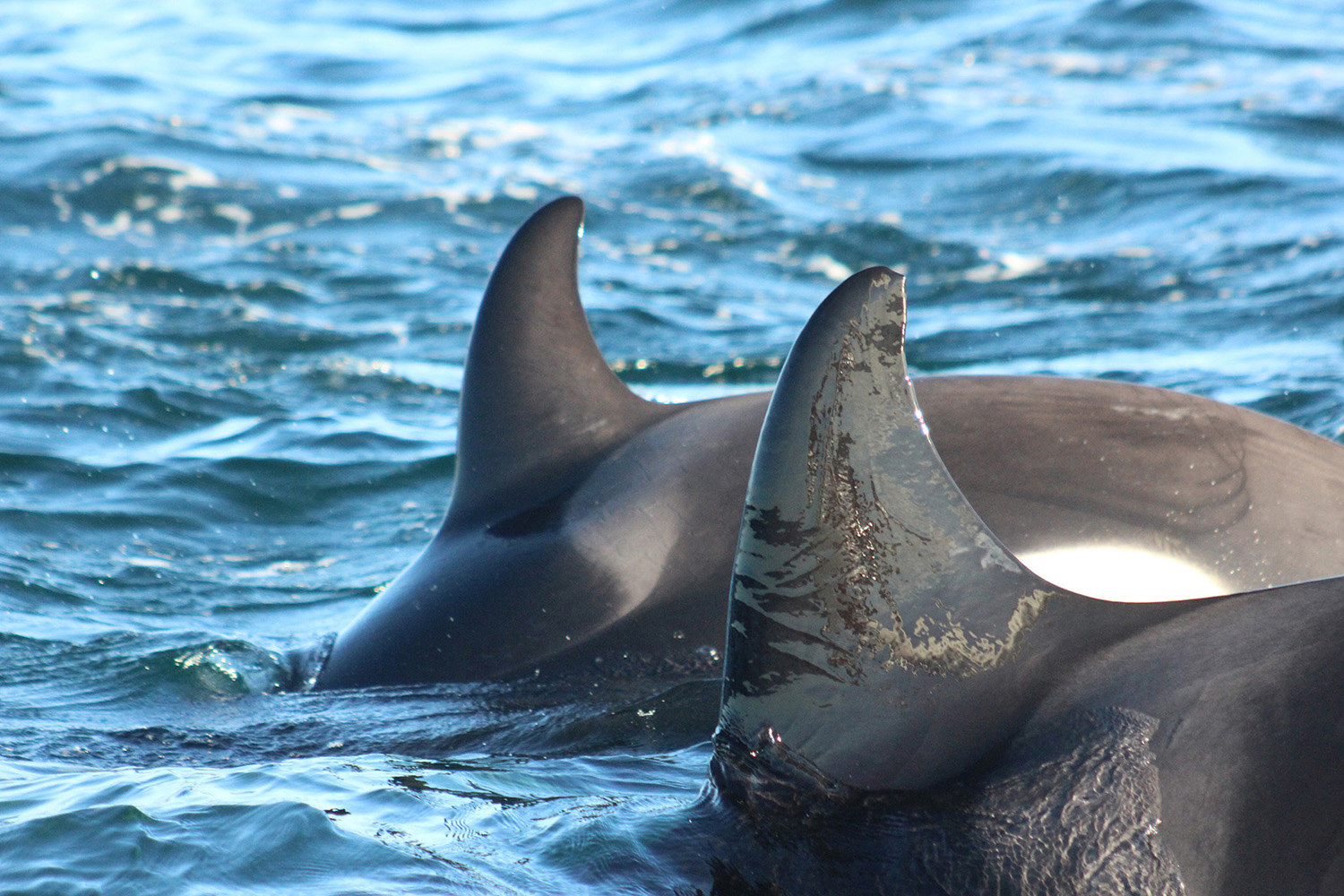
Barbanza area of La Coruña
The Foundation extended its collaboration with Fundación RIA for another two years to continue the activity of the Barbanza Eco-Social Laboratory. In 2020 the laboratory embarked on a research project with the HISTAGRA group of Santiago de Compostela University to promote the environmental, social and economic sustainability of this area in Galicia.
The new collaboration agreement facilitated the creation of two seed projects to promote activities that reconcile the exploitation of resources with the conservation of the environment. The first one is focused on various tracts of communal land located in the municipality of Rianzo that are given over entirely to the monoculture of eucalyptus trees and are frequently destroyed by wildfires due to negligent management. The second project concerns a wetland on the banks of the River Ulla that has suffered a loss of biodiversity due to part of the local community abandoning traditional farming practices.
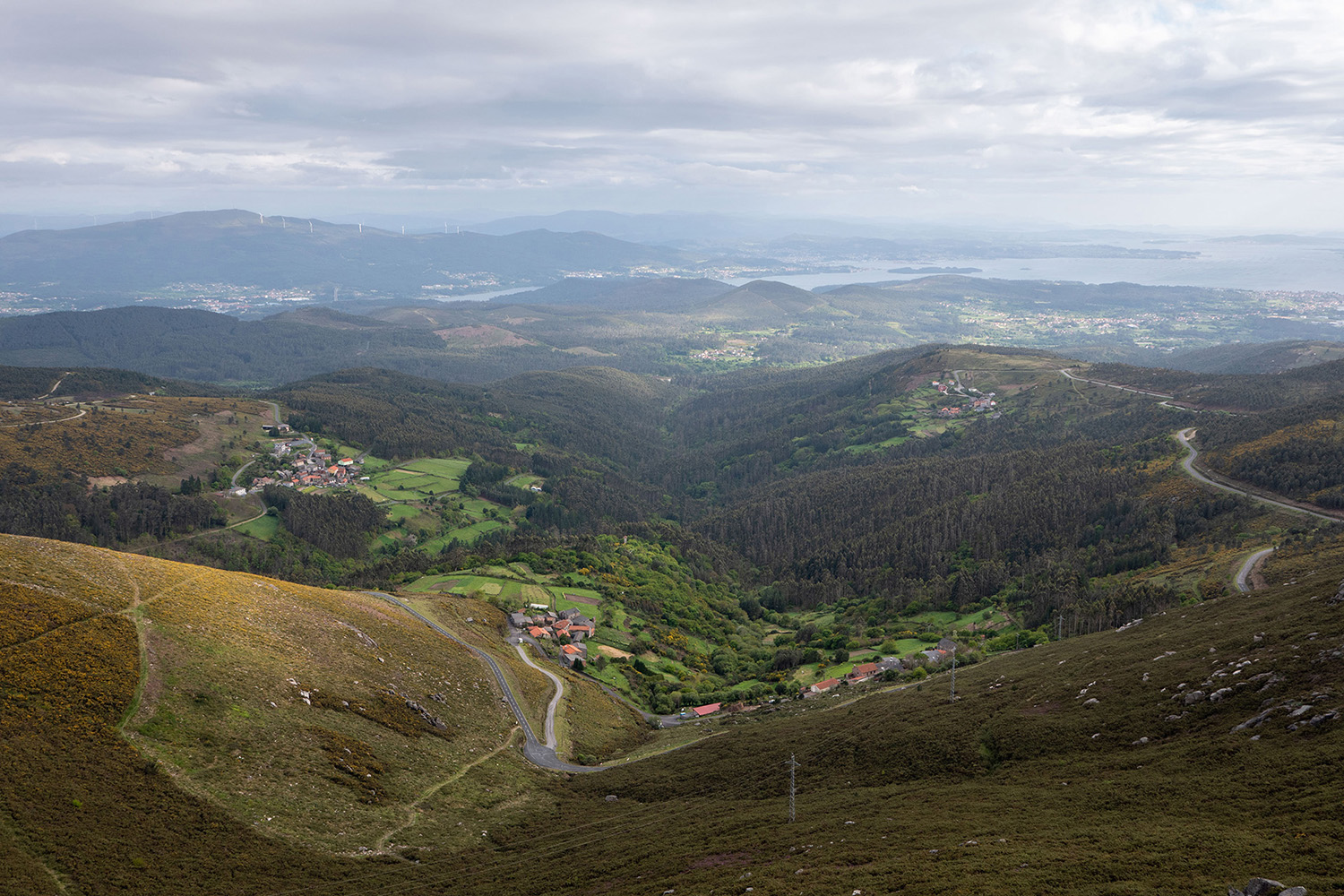
Balearic Islands
The Foundation continued to collaborate with the Tursiops association to improve certain aspects of the OCULTA research project conducted in 2020 and 2021 on the capacity of sperm whales to learn how to avoid collisions with ships and transfer this knowledge to other individuals of the species.
The continuity of this project, now renamed ULISES, led to the optimisation of one of the essential phases of the study: marking the animals with a CAT (customised animal tracking solution), an instrument fitted with a hydrophone and sensors to record the whales’ sequences of immersion.
The usual method of affixing the CAT with a pole from a nearby boat was replaced with the use of drones (UAV-unmanned aerial vehicle) to reduce the animals’ stress and the probability of accidents. ULISES will assess the effectiveness of this technique in controlled conditions in future research campaigns.
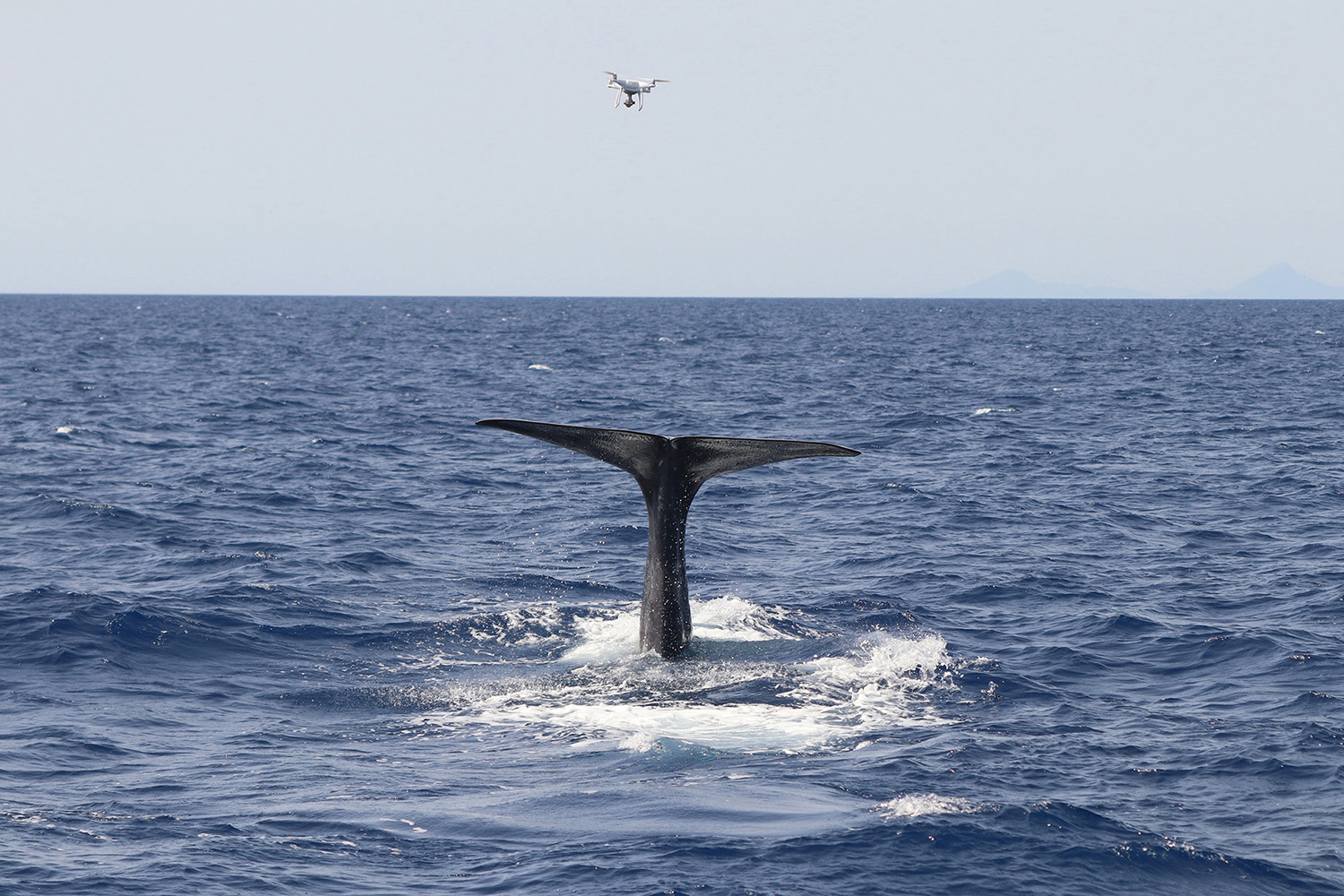
| Year begun | Project | Place | Collaborating entity |
|---|---|---|---|
| 2020 | Conservation of the Bearded Vulture | Central and northern Spain | Fundación para la Conservación del Quebrantahuesos |
| 2021 | Reinforcement of Red Kite Populations | South-west Spain | AMUS |
| ECCO: Canine Heroes for Nature | Catalonia | Naturaleza Rural | |
| Protection of Loggerhead Turtle Hatchings and Their Nests | Mediterranean coast | CRAM | |
| Conservation of Sharks and Rays | Alboran Sea | WWF Spain | |
| Production Innovation at Salt Flats | Bay of Cádiz | Mar Cristal Marilum | |
| 2022 | Western Mediterranean Coral Habitats | Ibiza (Balearic Islands) | Vellmarí Association |
| 2030 Santander Bay | Santander (Cantabria) | Fundación Naturaleza Y Hombre | |
| Friendship-Orcas | Galicia, Asturias, Cantabria, Basque Country and Andalucia | CEMMA | |
| Barabanza Eco-Social Laboratory | Barbanza area of La Coruña | Fundación Ria | |
| ULISES | Balearic Islands | Tursiops |
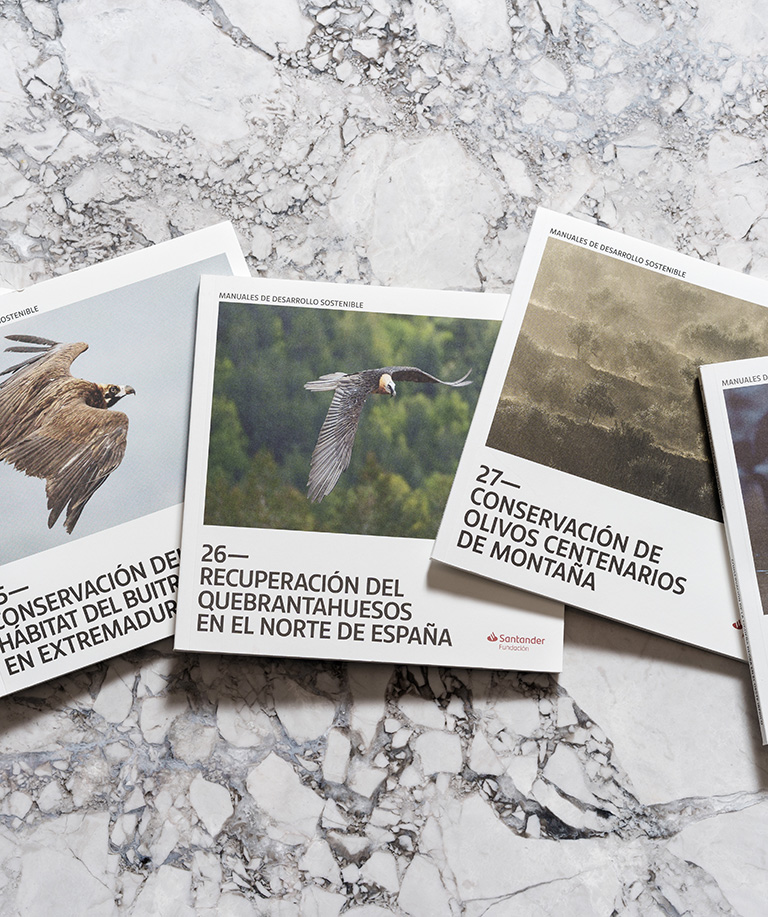
Publications
The Foundation created this collection to publicise the projects undertaken as part of its environmental programme. The handbooks provide detailed descriptions of the activities carried out by the conservation organisations and the methods used to restore ecosystems and protect endangered species.
Digital copies of all the handbooks are available on the Foundation’s website and a small number of hard copies are printed for distribution upon request to institutions, organisations and individuals interested in environmental management.
In 2019 and 2020, Fundación Banco Santander and Fundación Naturaleza y Hombre collaborated in the stabilisation of the black stork populations in natural spaces of Salamanca and Cáceres belonging to the Natura 2000 network. This handbook describes the actions carried out and provides details about the ecology, biology and distribution of this species in the western Iberian Peninsula.
The results obtained were supplemented with data from previous reports published by other experts and this same organisation, such as the annual censuses undertaken in the area since 2007 and the tracking of individuals on their migratory route.
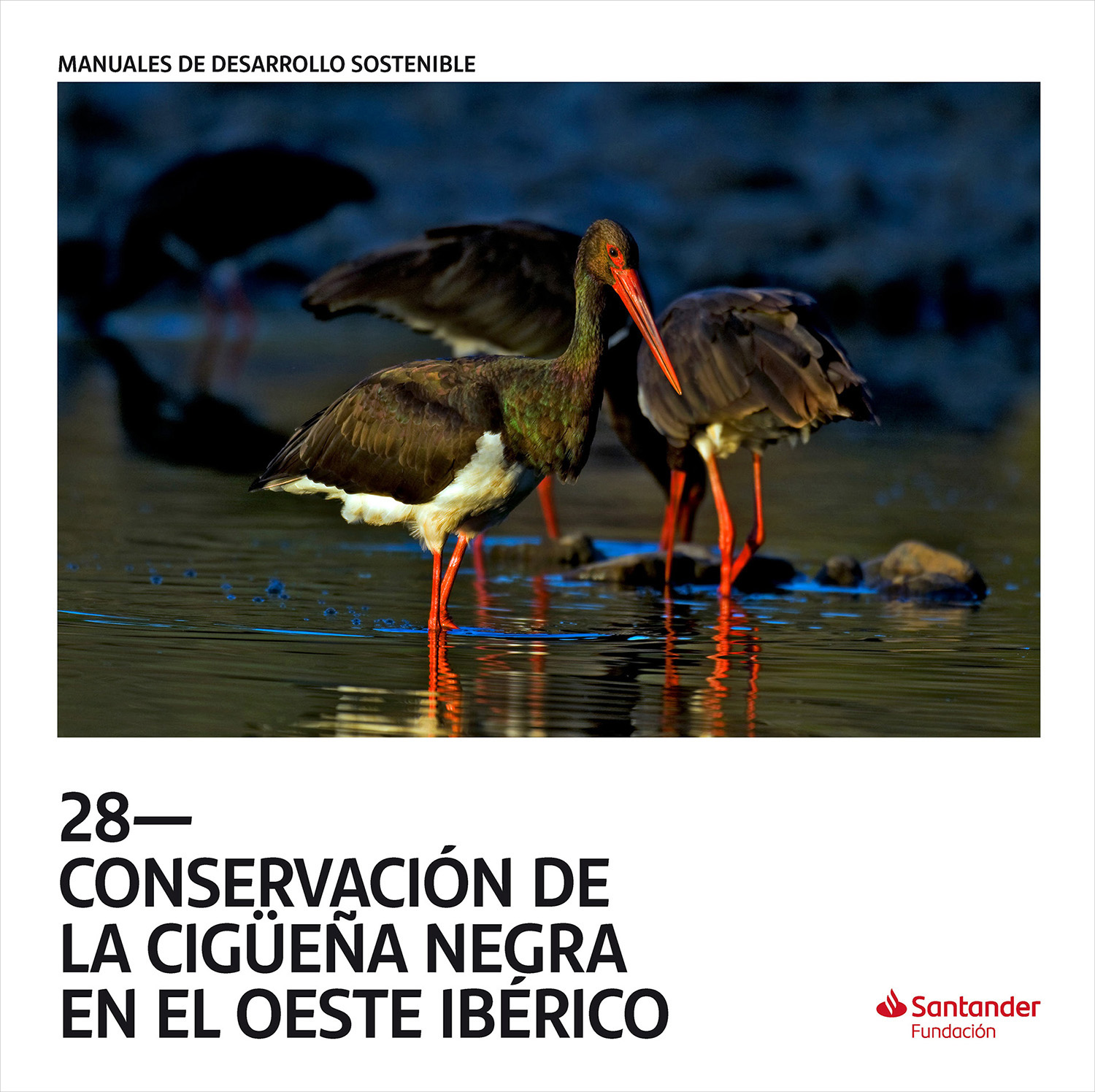
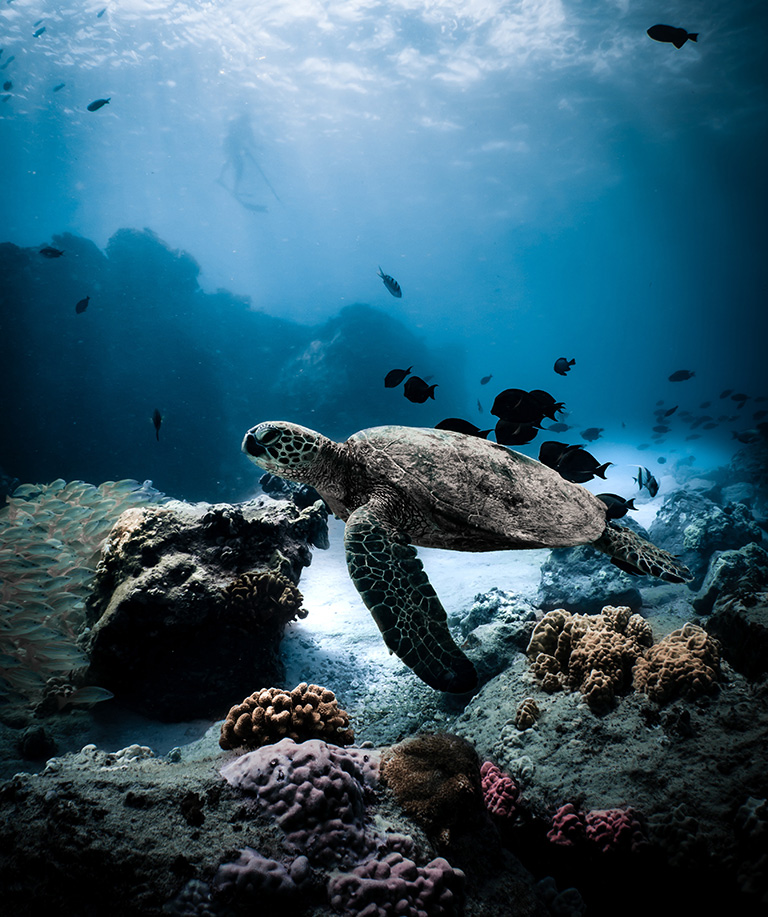
Environmental Footprint
Each year, Fundación Banco Santander measures the environmental impact of its activity to reduce its waste and emissions.
| Water (m3) | 253.98 |
| Water (m3/employee) | 14.94 |
| Electricity (kWh)1 | 23,610.75 |
| Electricity (kWh/employee)2 | 1,388.87 |
| Certified and recycled paper (kg) | 447.62 |
| Certified and recycled paper (kg/employee) | 26.33 |
1. El consumo interno total es de 84,99 GJ.
2. El consumo interno por empleado es de 5 GJ.
| Paper and cardboard (kg) | 711.78 |
| Paper and cardboard (kg/employee) | 41.87 |
| Indirect emissions from employee travel (Tn CO2 eq)3 | 24.42 |
| Indirect emissions from electricity (Tn CO2 eq) | 6.80 |
| Total indirect emissions (Tn CO2 eq) | 31.22 |
| Total indirect emissions (Tn CO2 eq/employee) | 1.84 |
| Average number of employees | 17 |
3. Estas emisiones incluyen los viajes por motivos laborales y los desplazamientos al puesto de trabajo.

